Study of Ground Plane Effects on Monopole Antenna Performance
Abstract
:1. Introduction
2. Effect of the Ground Plane on Monopole Antennas
2.1. Factors That Affect Monopole Antenna Characteristics
2.2. The Serpentine Monopole Antenna Structure
2.3. The Serpentine Antenna Model
2.4. CMA of the Serpentine Antenna
2.5. Serpentine Antenna Surface Current Analysis
2.6. The Effective Ground Plane Range of the Serpentine Antenna
2.7. The Influence of the Grounding Branches of the Serpentine Antenna on the Antenna’s Performance
3. Physical Test of the Antenna
4. Conclusions
Author Contributions
Funding
Data Availability Statement
Acknowledgments
Conflicts of Interest
References
- Jiang, S.; Wang, Q.; Chen, X.; Tian, M.; Liu, Z. Design and Study of 2.4 GHz Band inverted-F Printed Antenna. Transducer Microsyst. Technol. 2020, 39, 39–41. [Google Scholar]
- IEEE802.11a. Available online: https://standards.ieee.org/ieee/802.11a/1165/ (accessed on 11 March 2023).
- IEEE802.11b. Available online: https://standards.ieee.org/ieee/802.11b/1166/ (accessed on 11 March 2023).
- Xu, Y.; Jiao, Y.C.; Luan, Y.C. Compact CPW-fed Printed Monopole Antenna with Triple-band Characteristics for WLAN/WiMAX Applications. Electron. Lett. 2012, 48, 1519–1520. [Google Scholar] [CrossRef]
- Allies, L.; Blampain, E.; M’Jahed, H.; Prieur, G.; Elmazria, O. Modeling of Wireless SAW Temperature Sensor and Associated Antenna. Instrumentation 2014, 1, 8–14. [Google Scholar]
- Yan, D.; Guo, Q.; Chen, W. Design of a High-isolation Dual-frequency MIMO Antenna for WLAN. Electron. Compon. Mater. 2020, 39, 91–96. [Google Scholar]
- Liu, Q.; Wang, S.; Yan, J. Design of Miniaturization and Tri-band Monopole Antenna for WLAN/WiMAX Applications. Electron. Meas. Technol. 2021, 44, 120–124. [Google Scholar]
- Moosazadeh, M.; Kharkovsky, S. Compact and Small Planar Monopole Antenna with Symmetrical L-and-U-shaped Slots for WLAN/WiMAX Applications. IEEE Antennas Wirel. Propag. Lett. 2014, 13, 388–391. [Google Scholar] [CrossRef]
- Kalraiya, S.; Singh, H.S.; Meshram, M.K.; Thottapan, M. Micro Strip Line-fed Dual-band Printed Monopole Antenna for WLAN/WiMAX/HIPERLAN Applications. In Proceedings of the 2014 IEEE REGION 10 SYMPOSIUM, Kuala Lumpur, Malaysia, 14–16 April 2014; pp. 224–227. [Google Scholar]
- Zhang, L.; Wang, X.; Gao, H. Design of Planar Monopole Antenna with Defected Ground Structure. J. Microw. 2020, 36, 137–139. [Google Scholar]
- Chen, M. Influence of ground plane on the performance of GP antenna. China Sci. Technol. Inf. 2012, 55–62. [Google Scholar]
- Zhen, W.; Hongtao, L. Effect Analysis of Ground Plane Size on A UWB Monopole Antenna. Electron. Inf. Warf. Technol. 2015, 30, 67–90. [Google Scholar]
- Weiner, M. Monopole Element at the Center of a Circular Ground Plane whose Radius is Small or Comparable to a Wavelength. IEEE Trans. Antennas Propag. 1987, 35, 488–495. [Google Scholar] [CrossRef]
- Kang, C. Research and Exploration of Ground-independent Antennas. Master’s Thesis, University of Suzhou, Suzhou, China, 2010. [Google Scholar]
- Hang, H.B.; Liu, S.Q. Simulation and Research of RCS based on HFSS. Foreign Electron. Meas. Technol. 2015, 34, 60–63. [Google Scholar]
- Kraus, J.D. Antenna; Publishing House of Electronics Industry: Beijing, China, 2011. [Google Scholar]
- Song, Z.X.; Wu, B.Y.; Zhang, P. An Ultra-wideband Vivaldi Antenna Design Applied to Near Field Test System. Foreign Electron. Meas. Technol. 2014, 33, 99–102. [Google Scholar]
- Yang, H.; Tu, L.; Feng, L.; Shuai, L.; Yin, L.; Zeng, L.; Liu, S. Design of a 433.92 MHz Printed Antenna. Mod. Electron. Tech. 2020, 43, 6–10. [Google Scholar]
- Zhang, Y.; Wang, Z.; Sun, S.; Liu, Y. Design and Implementation of RFID Antenna for Smart Key Cabinet. Chin. J. Electron Devices 2021, 44, 451–455. [Google Scholar]
- Liu, L.; Weng, Y.F.; Cheung, S.W.; Yuk, T.I.; Foged, L.J. Modeling of cable for measurements of small monopole antennas. In Proceedings of the 2011 Loughborough Antennas & Propagation Conference, Loughborough, UK, 14–15 November 2011. [Google Scholar]
- Lim, S.; Rogers, R.L.; Ling, H. Ground plane size reduction in monopole antennas for ground wave transmission. In Proceedings of the 2005 IEEE Antennas and Propagation Society International Symposium, Washington, DC, USA, 3–8 July 2005; Volume 1B, pp. 406–409. [Google Scholar]
- Weng, Y.F.; Cheung, S.W.; Yuk, T.I. Effects of ground-plane size on planar UWB monopole antenna. In Proceedings of the TENCON 2010—2010 IEEE Region 10 Conference, Fukuoka, Japan, 21–24 November 2010; pp. 422–425. [Google Scholar]
- Khan, R.; Al-Hadi, A.A.; Soh, P.J.; Ali, M.; Owais, O.; Islam, I. Multiband monopole antenna with minimised ground plane influence for portable devices. IET Microw. Antennas Propag. 2017, 11, 1829–1835. [Google Scholar] [CrossRef]
- Kulkarni, J.; Sim, C.Y.D. Multiband, miniaturized, maze shaped antenna with an air-gap for wireless applications. Int. J. RF Microw. Comput. Aided Eng. 2020, 31, e22502. [Google Scholar] [CrossRef]

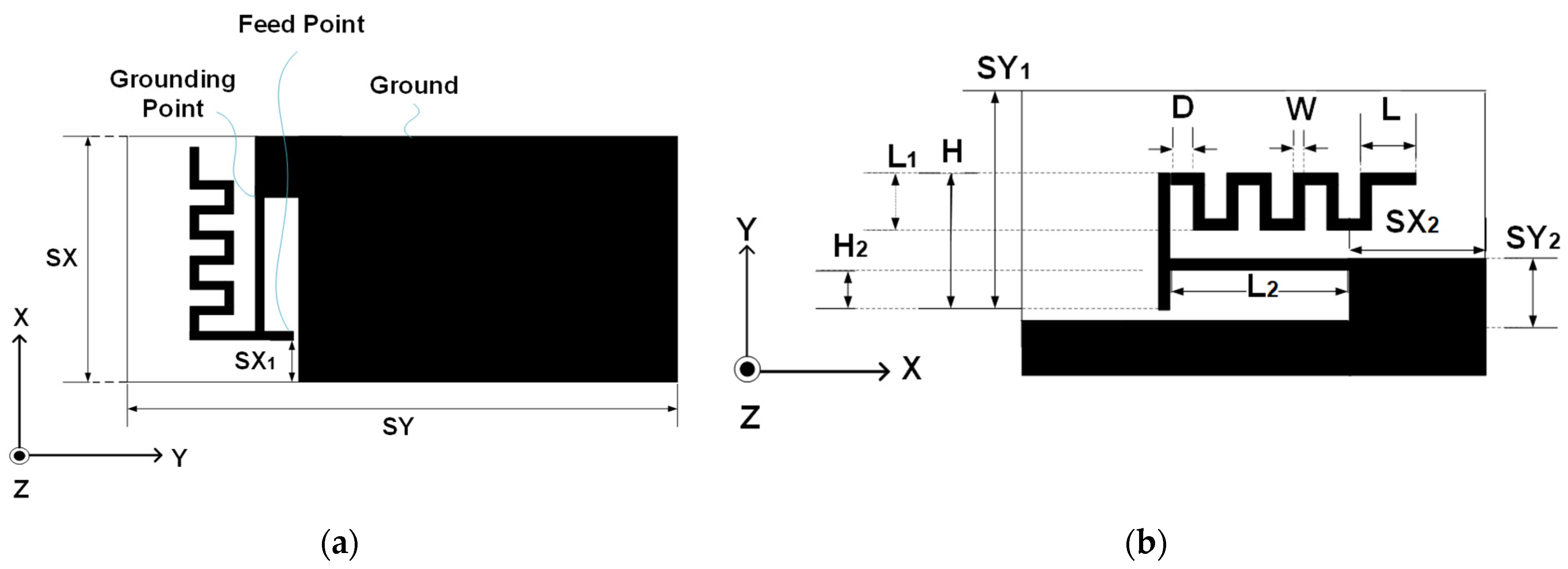
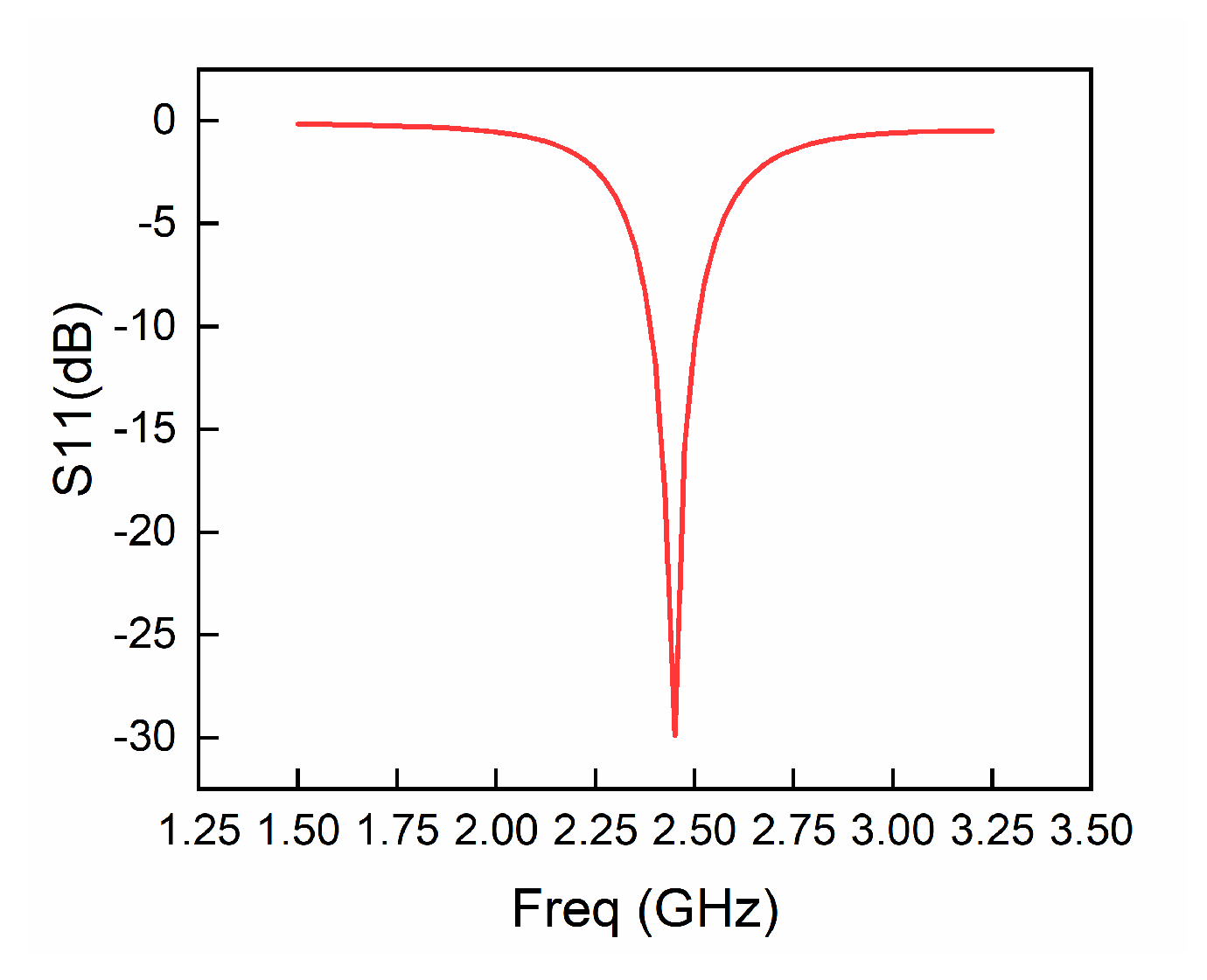

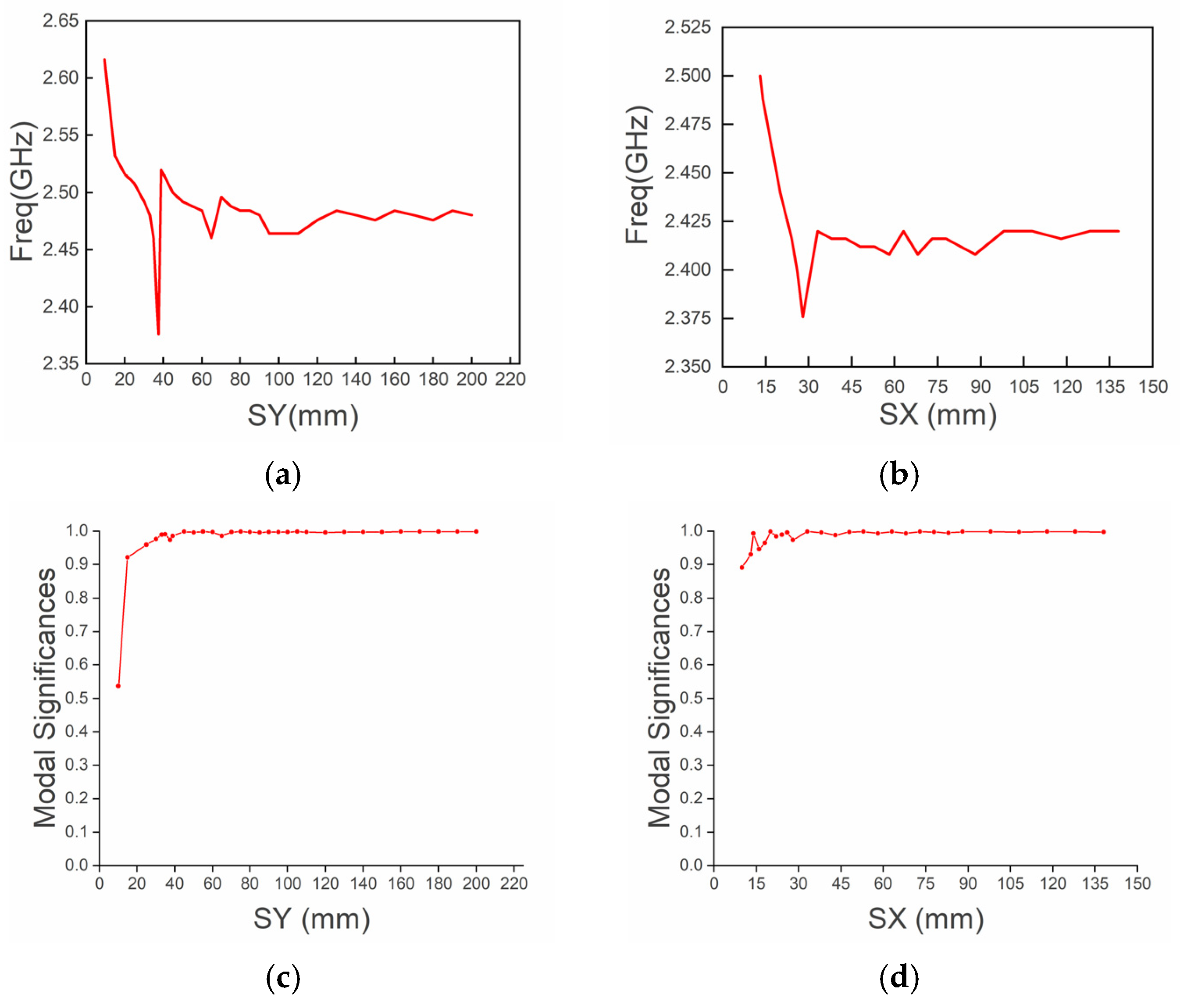
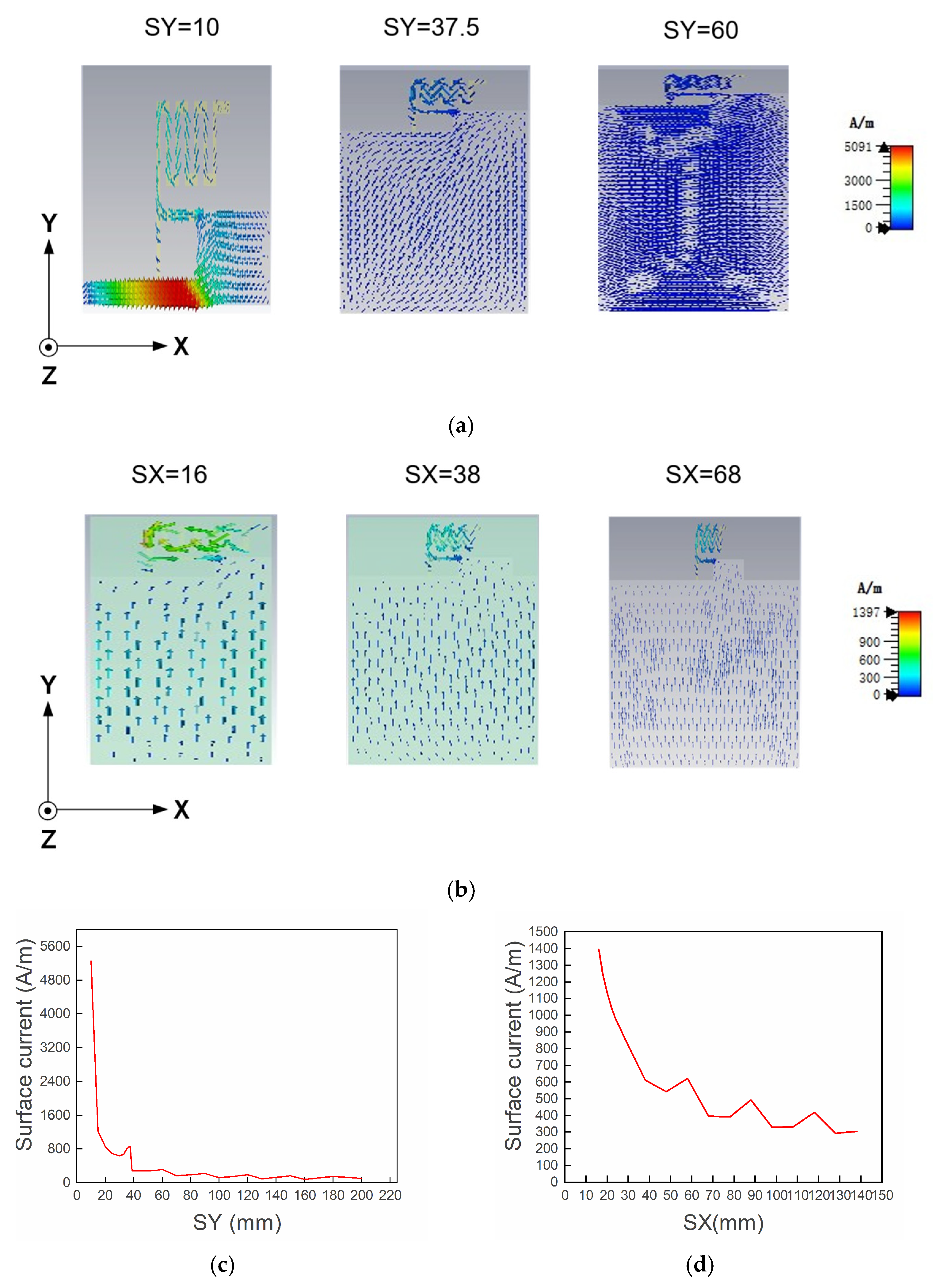
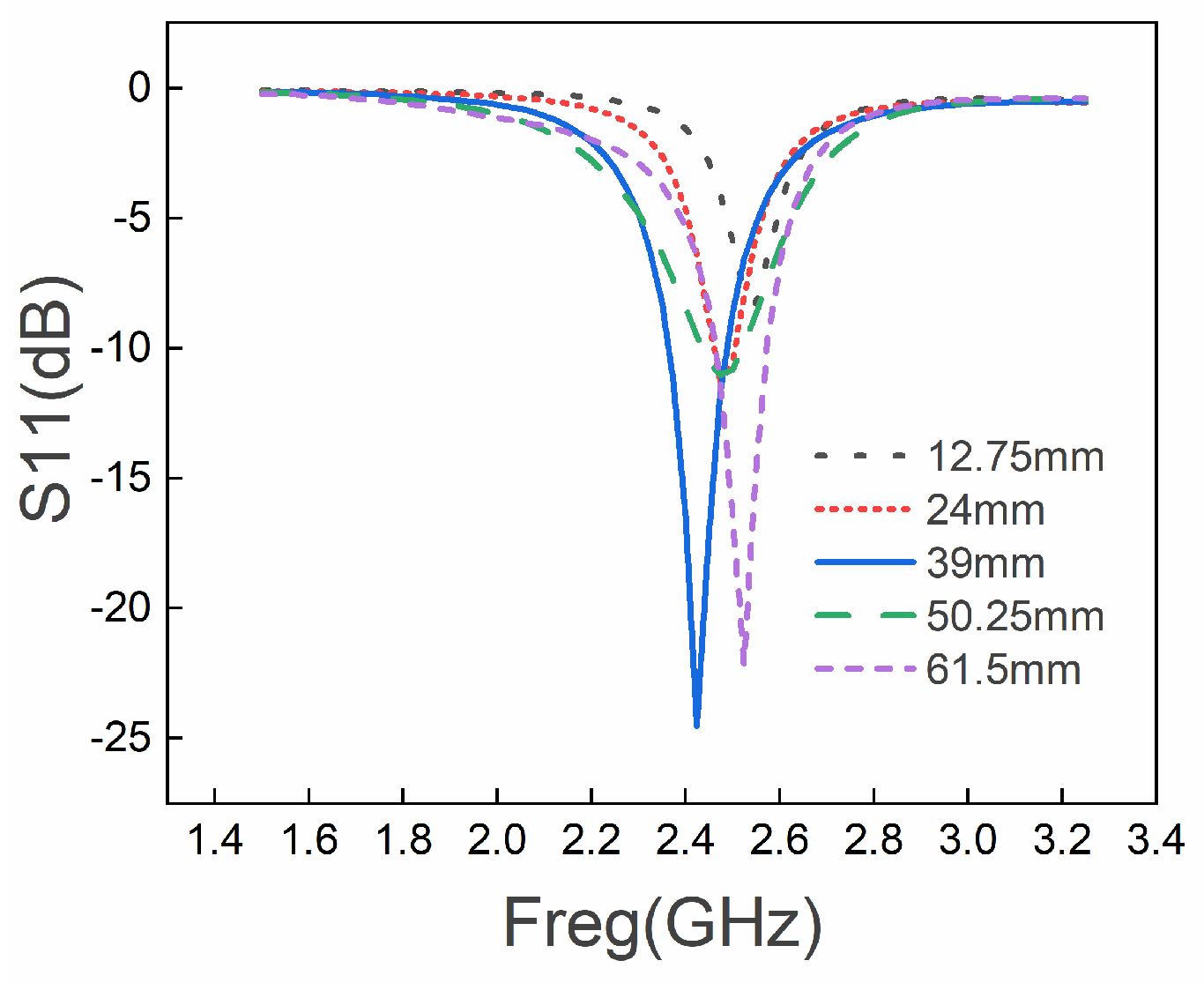
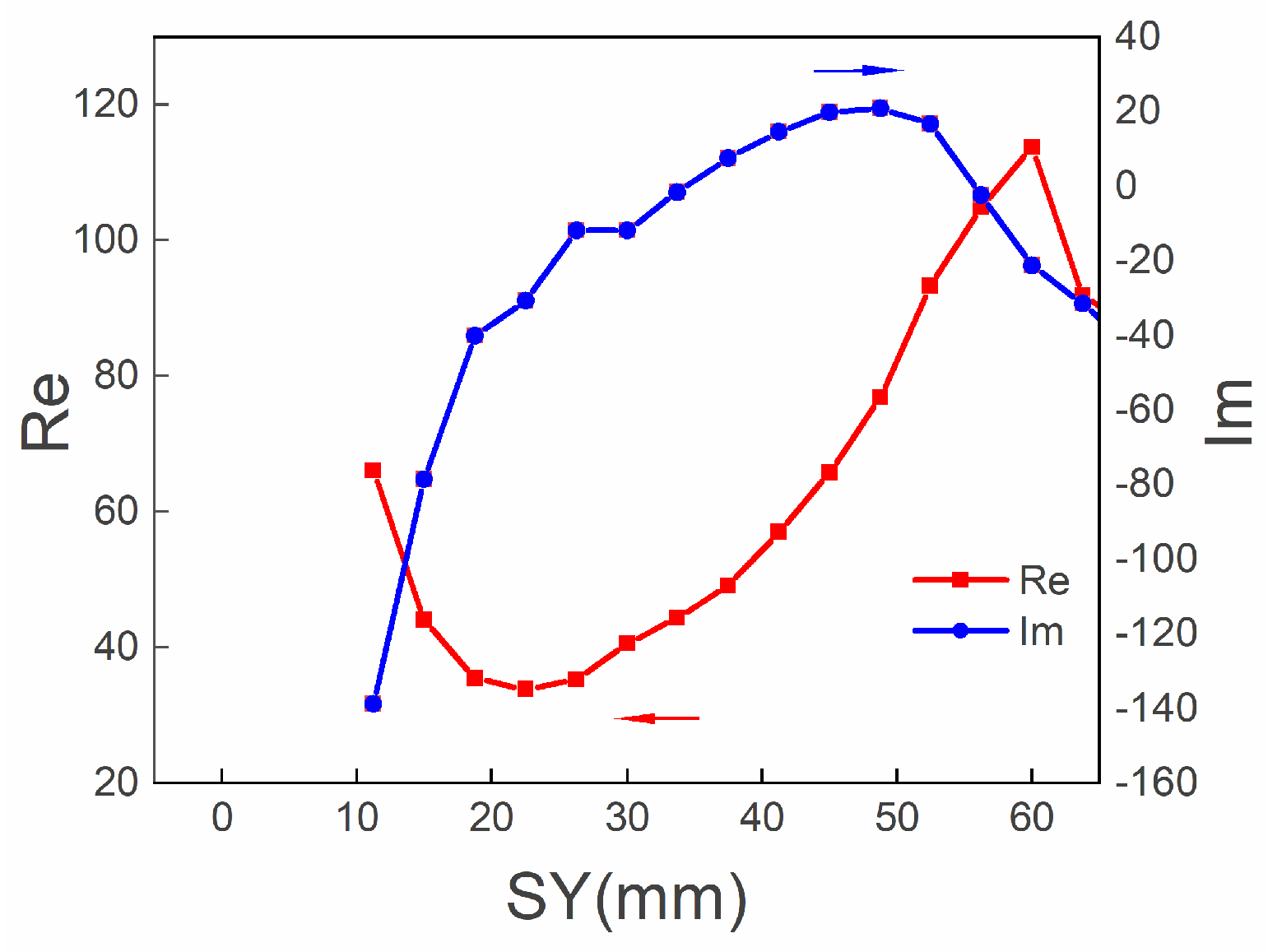
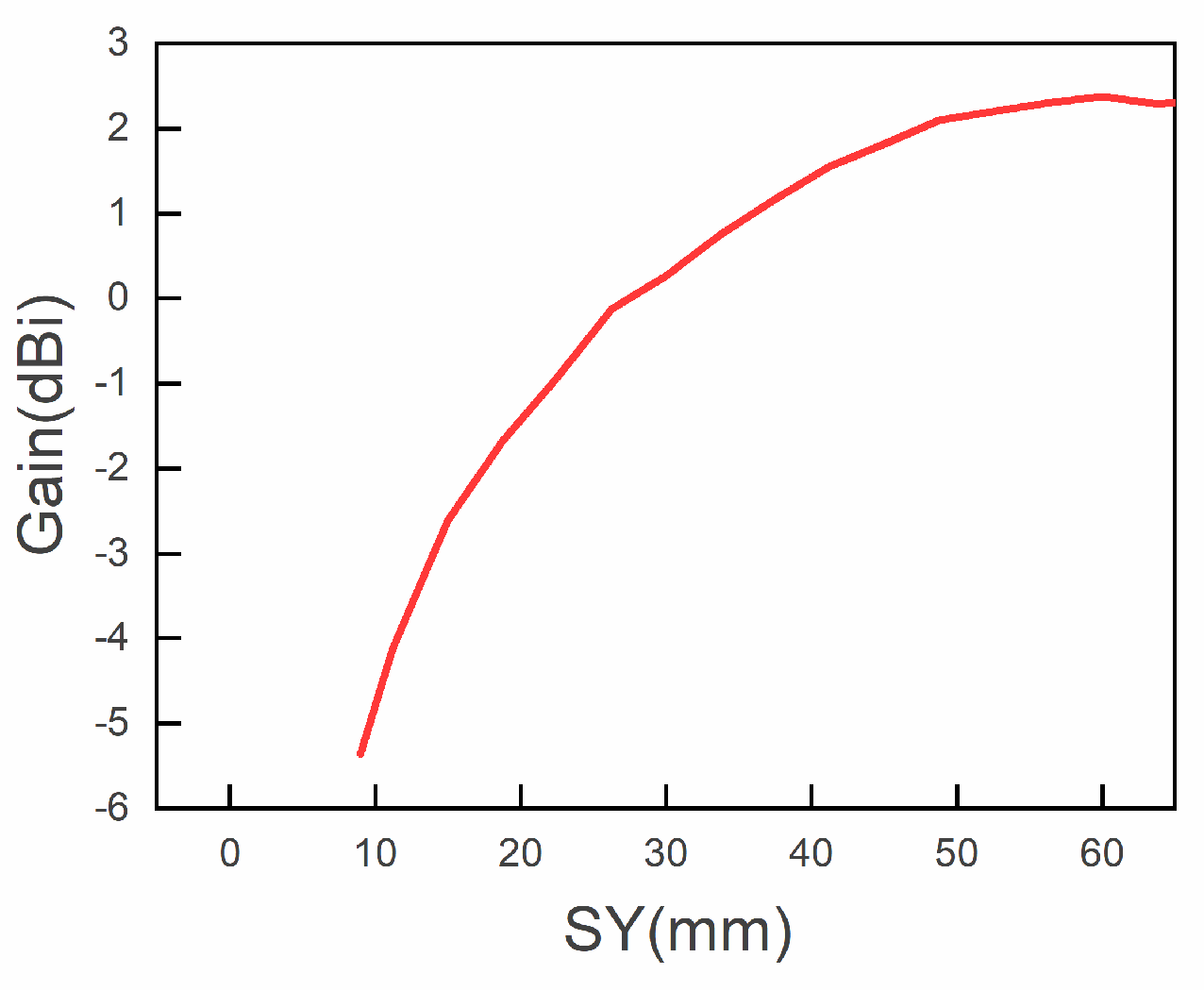



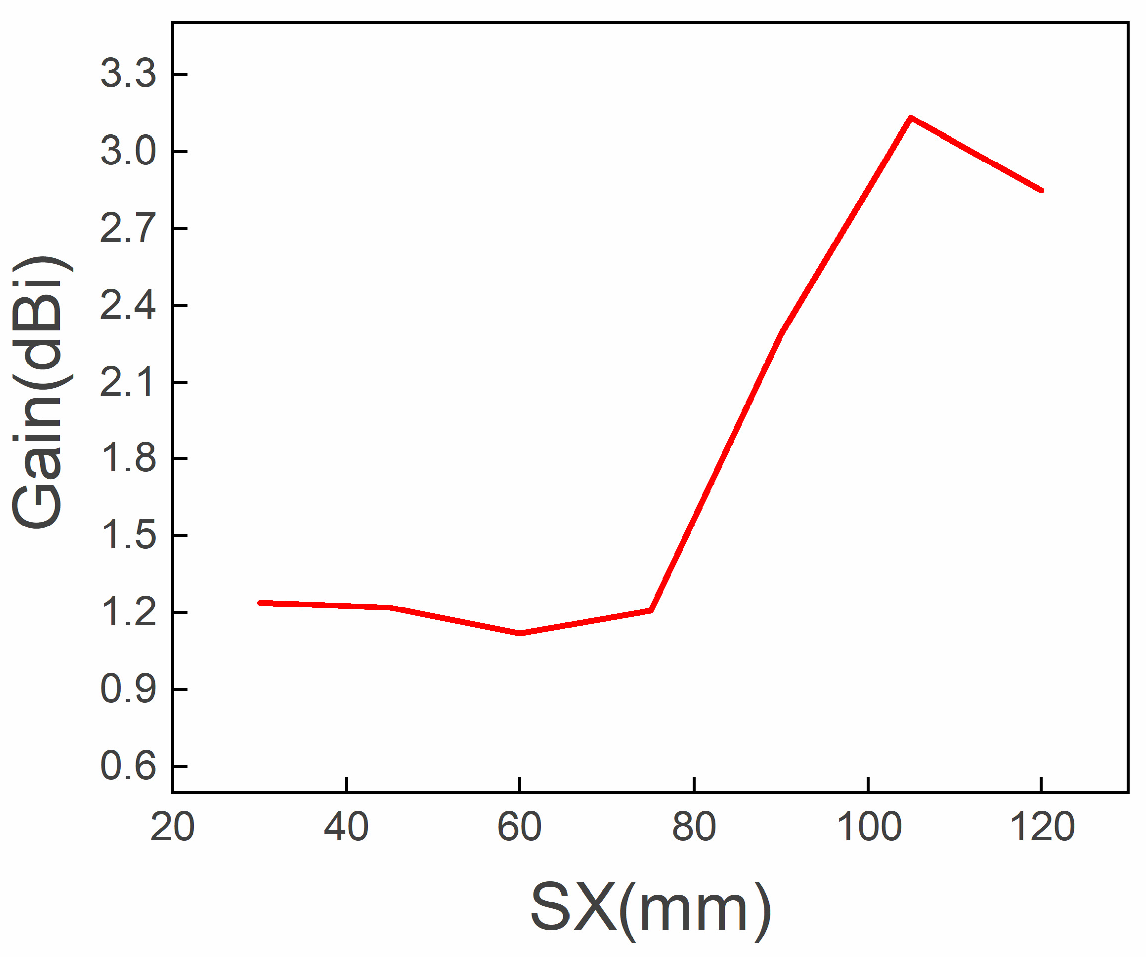
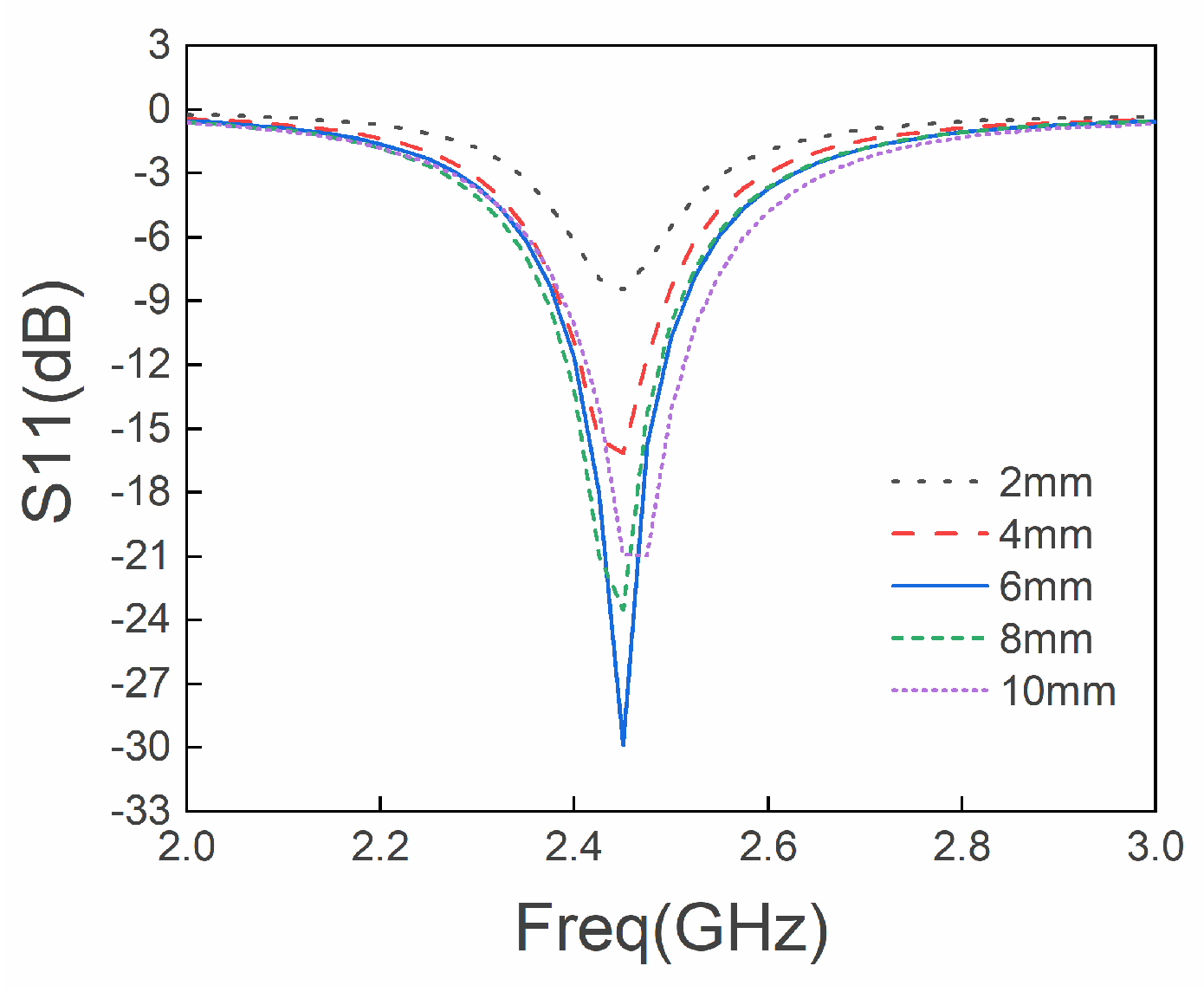

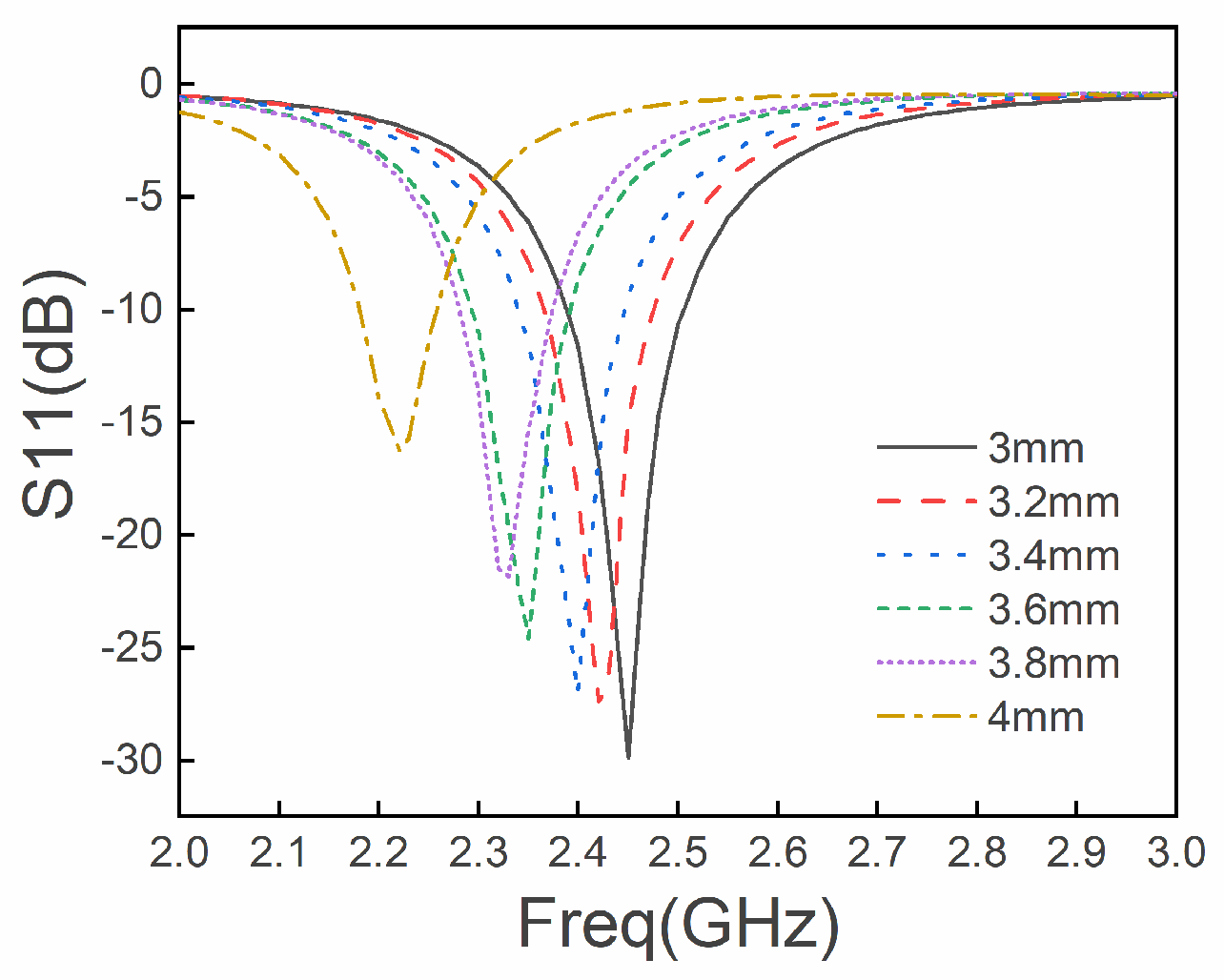
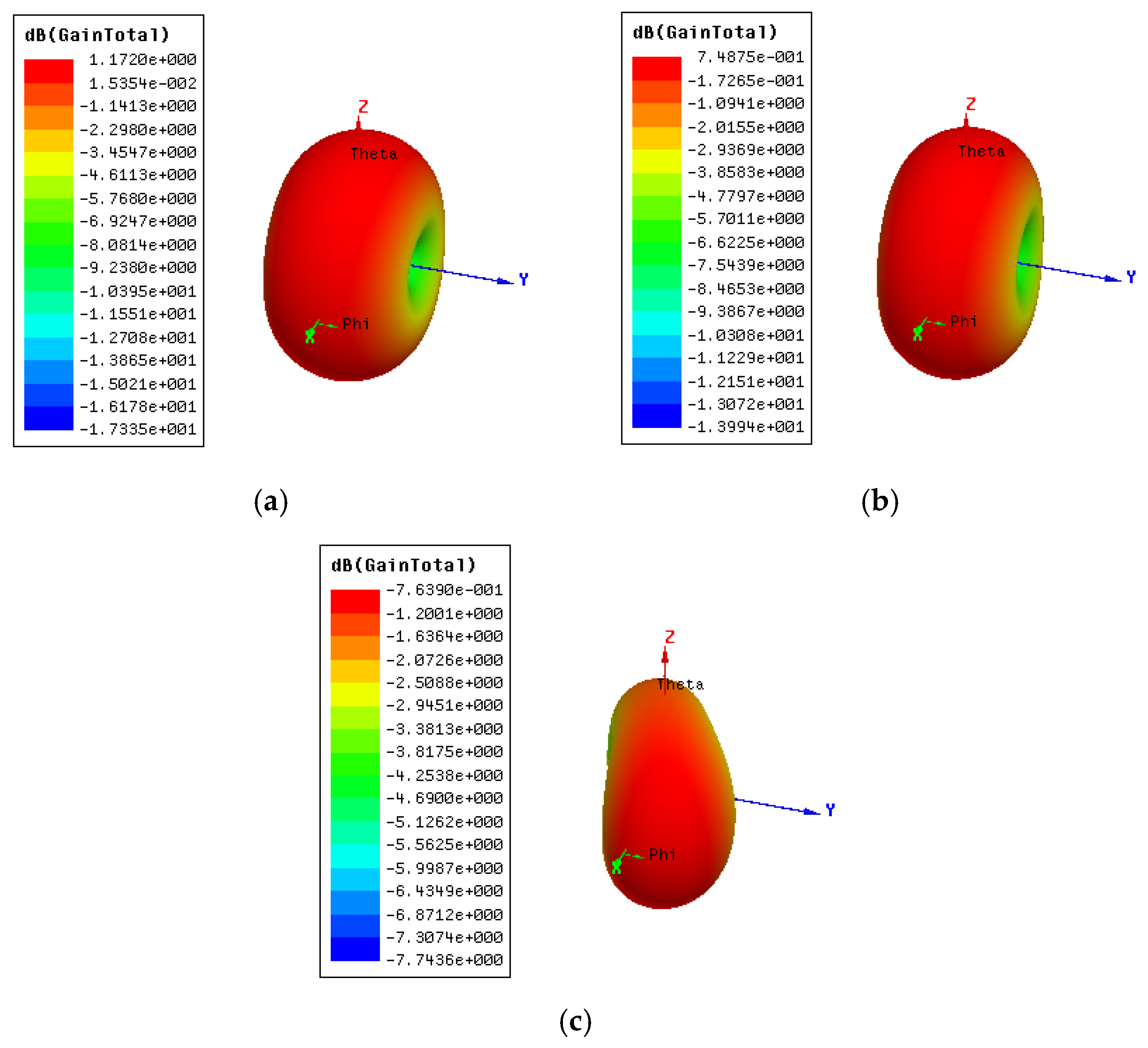

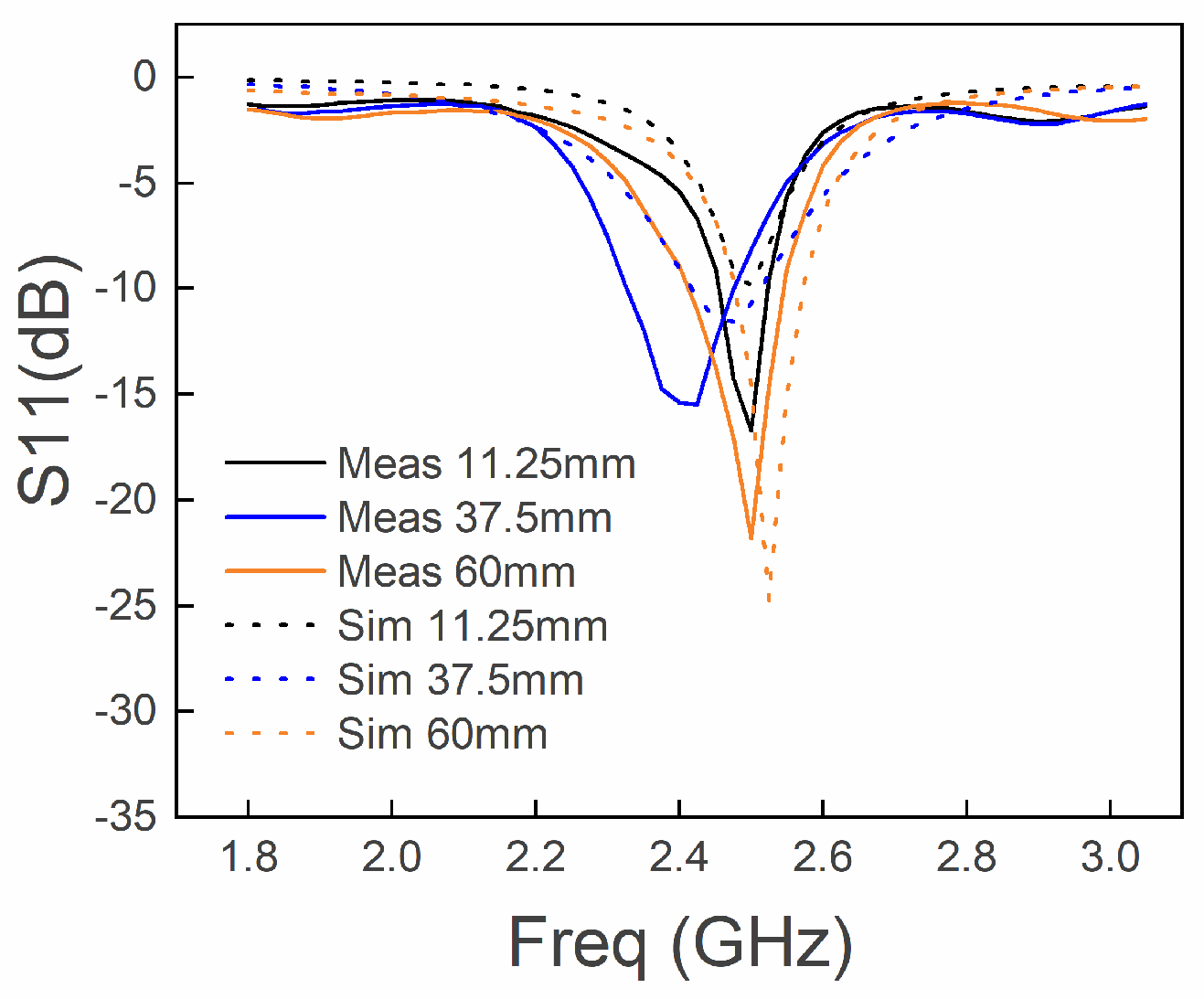
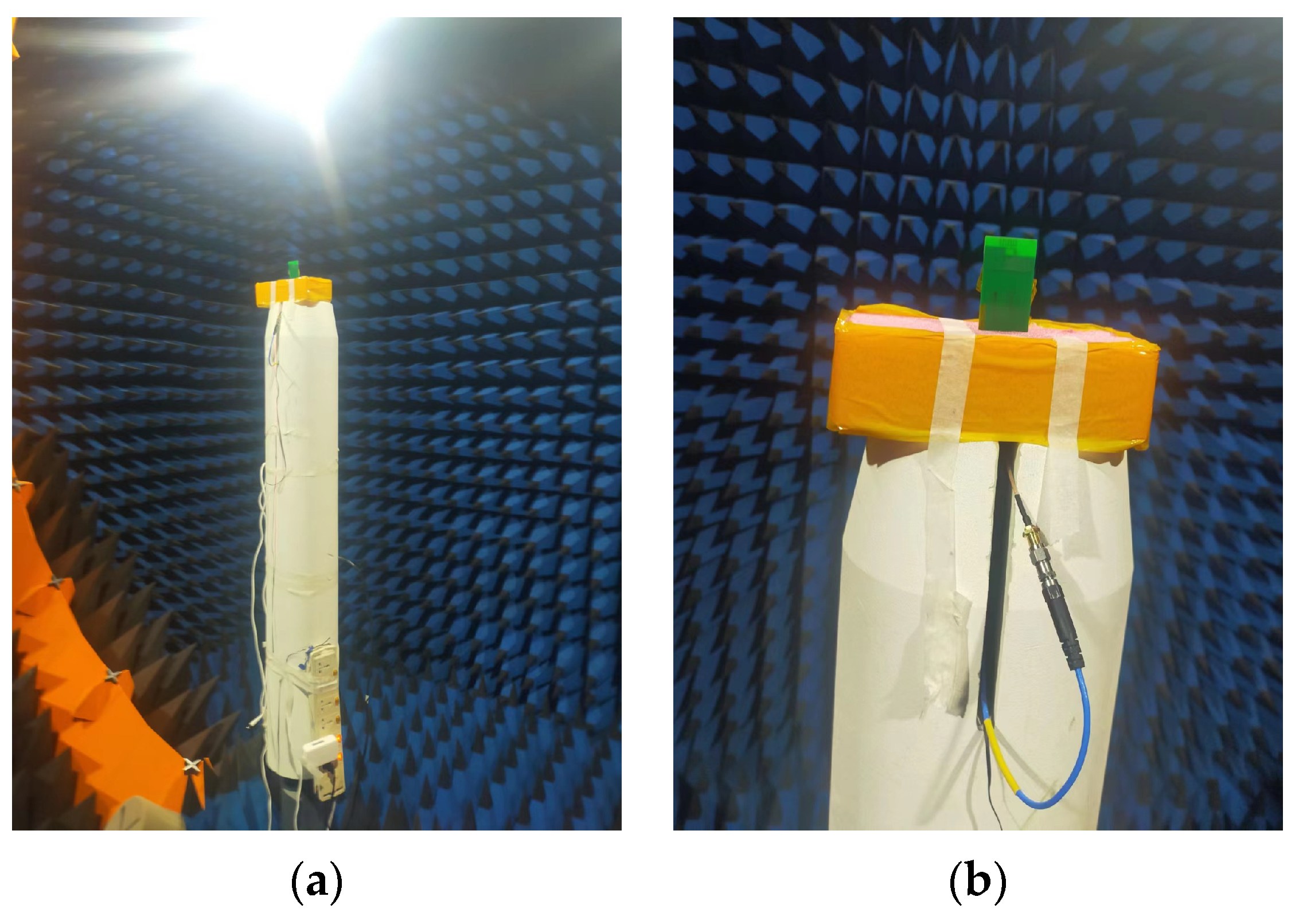
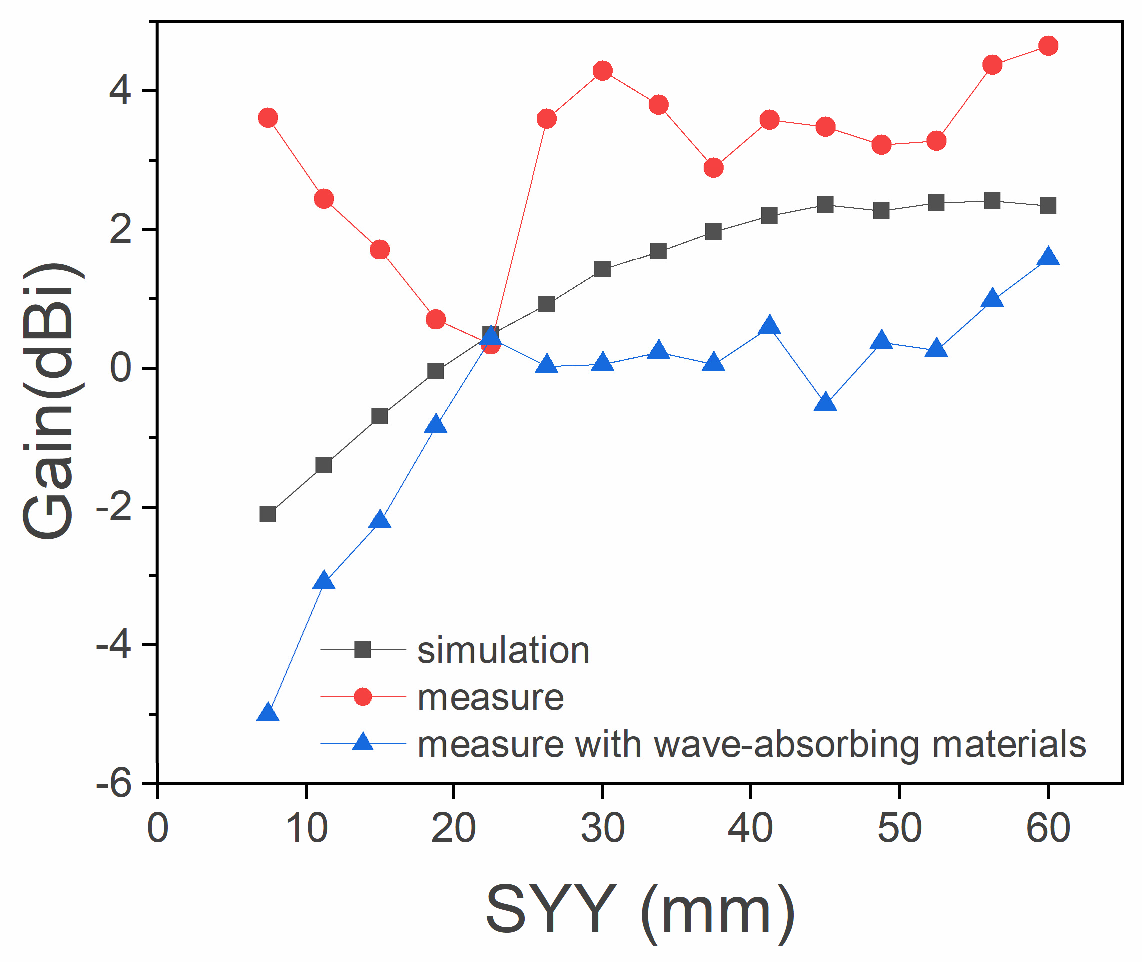


| W | H | D | L1 | L2 |
| 0.5 | 7.5 | 0.9 | 3.5 | 6 |
| SY1 | SY | SX1 | SX | R |
| 9 | 37.5 | 11 | 28 | 0.15 |
| SX2 | L | H2 | SY2 | |
| 11 | 2 | 2.5 | 3 |
| PCB board no. | 1 | 2 | 3 | 4 | 5 | 6 | 7 | 8 |
| Ground plane length SYY/(mm) | 7.5 | 11.25 | 15 | 18.75 | 22.5 | 26.25 | 30 | 33.75 |
| PCB board no. | 9 | 10 | 11 | 12 | 13 | 14 | 15 | |
| Ground plane length SYY/(mm) | 37.5 | 41.25 | 45 | 48.75 | 52.5 | 56.25 | 60 |
| Ref | Antenna Type | Antenna Size | Gain (dBi) | Radiation Efficiency (%) | Innovation Points |
|---|---|---|---|---|---|
| [21] | Monopole antennas | Diameter = 30 mm | / | / | Spiral ground plane design |
| [22] | Elliptical planar monopole antennas | R1 = 12 mm R2 = 9 mm | / | 90 | The effects of the dimensions of the rectangular ground plane |
| [23] | Multiband monopole antenna | 20 × 18.6 mm | 2.0 | / | The ground plane influence has been minimized by adjusting the feed line |
| [24] | Printed multiband monopole antenna | 6 × 4 mm | 6.4 | 85 | An air gap was set between the proposed antenna and system ground |
| Proposed work | The serpentine antenna | 10.9 × 7.5 mm | 1.17 | 75 | The impact of ground plane size by CMA analysis, and the effects of the branch length. |
Disclaimer/Publisher’s Note: The statements, opinions and data contained in all publications are solely those of the individual author(s) and contributor(s) and not of MDPI and/or the editor(s). MDPI and/or the editor(s) disclaim responsibility for any injury to people or property resulting from any ideas, methods, instructions or products referred to in the content. |
© 2023 by the authors. Licensee MDPI, Basel, Switzerland. This article is an open access article distributed under the terms and conditions of the Creative Commons Attribution (CC BY) license (https://creativecommons.org/licenses/by/4.0/).
Share and Cite
Gao, P.; Li, J.; Wang, W. Study of Ground Plane Effects on Monopole Antenna Performance. Electronics 2023, 12, 2681. https://doi.org/10.3390/electronics12122681
Gao P, Li J, Wang W. Study of Ground Plane Effects on Monopole Antenna Performance. Electronics. 2023; 12(12):2681. https://doi.org/10.3390/electronics12122681
Chicago/Turabian StyleGao, Pengjian, Jia Li, and Weibing Wang. 2023. "Study of Ground Plane Effects on Monopole Antenna Performance" Electronics 12, no. 12: 2681. https://doi.org/10.3390/electronics12122681
APA StyleGao, P., Li, J., & Wang, W. (2023). Study of Ground Plane Effects on Monopole Antenna Performance. Electronics, 12(12), 2681. https://doi.org/10.3390/electronics12122681





